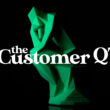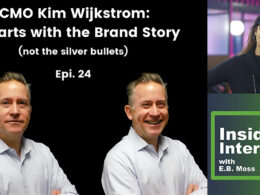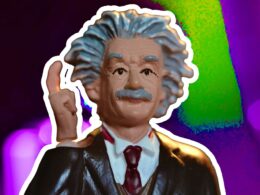It’s not always obvious why people make the decisions they do. If a customer buys a certain product, what makes them choose it over another? How does a company decide which products to promote or how to market those products? Understanding consumer behavior is one of the most important aspects of marketing and sales, yet it’s also one of the most challenging. But thanks to some fascinating research in behavioral economics and psychology, we can learn more about what drives consumers’ decisions and strategies for making them behave in ways that are beneficial to us as marketers.
How the subconscious works.
Your subconscious mind is not a rational or conscious entity. It’s more like a computer that has been programmed to react certain ways to certain stimuli. And just like any computer, it can be hacked by using the right codes and commands — but you have to know how it works first. If you don’t, then your best efforts will be fruitless and frustrating!
To understand consumer behavior, we need to know what makes people do what they do and why they buy what they buy. This means learning about things like cognitive biases and decision-making processes (like the ones listed above). But even if you’re an expert on these topics, there are other factors at play in consumer behavior that can still trip up even the most qualified consumer researcher: namely your emotions, memories, motivations and impulses — and these are all things that affect how consumers behave in their daily lives!
A lot of our decisions are made in an instant, without conscious thought.
Although we are often unaware of it, much of our decision-making process is driven by the subconscious mind. In the book Blink: The Power of Thinking without Thinking, Malcolm Gladwell writes that our brains make thousands of decisions per second, many faster than we can consciously comprehend.
The power of the subconscious mind extends beyond everyday choices like what to wear and what to eat: it also influences how we feel and act in situations that are more significant or emotionally charged. A study conducted by researchers at Harvard University showed that subjects who were shown pictures of other people reacting positively to receiving electric shocks were themselves more likely to administer stronger electric shocks when given the opportunity (regardless of whether they believed they would receive an electric shock). This demonstrates how exposure to certain stimuli can influence behavior even if one does not show any conscious awareness or recall of those events occurring — we often treat others based on their appearance alone!
We buy for emotions (primarily), not reasons.
Since we generally buy for emotion, it stands to reason that our emotions are the drivers of consumer behavior. Our emotions determine which products we choose and what motivates us to make those choices. Sometimes, these reasons are logical: people buy things because they’re good quality or useful. But sometimes, they’re not. Sometimes, we buy things because they make us feel good (or bad). Or because they make us feel better about something we did wrong or less guilty about how much time it’s taking to get them done in the first place!
Behavioral economics helps explain such irrational behaviors by looking at the cognitive biases that affect our decision making.
In other words, people are irrational because they make poor decisions based on the information they have. Behavioral economics is a field that studies these human tendencies in order to try and understand them and how they can be applied to various aspects of life.
This may seem like a discouraging concept: If we’re not rational creatures, then what hope do we have? But the truth is that our irrationalities can actually be helpful when it comes to making quick decisions in our day-to-day lives. By recognizing these cognitive biases (which are mental shortcuts we use to help us quickly process information), you can better understand your own behavior and make better financial choices for yourself down the road.
We’re driven by a desire to reduce cognitive dissonance.
It’s easy to see that we’re motivated by a desire to reduce cognitive dissonance. If someone is attracted to you, it’s because they think you’re attractive. If a friend says you look nice in that dress, then it’s likely true! But what about when people offer opposing opinions?
When exposed to contradictory information (e.g., “You’re really smart” versus “You’re not very smart”), we experience discomfort and try to reduce this discomfort by changing our beliefs so they align with the evidence presented. We want our beliefs and actions — like what brand of cereal we buy — to align with each other as well, so that when we see ourselves buying Kellogg’s Frosted Flakes®, we can feel like good people who are also smart consumers who make good decisions about their purchases.
We’re risk-averse when it comes to loss, but we get risk-seeking when considering potential gains.
Behavioral economists have found that our decisions are influenced by several cognitive biases that can lead us to make irrational choices. One such bias is called loss aversion — the idea that losses hurt more than gains make us happy. It explains why we’re more likely to buy insurance than invest in stocks and bonds (even though netting out a win/loss scenario shows you’ll come out even). It also explains why lottery tickets are so popular: while they have an extremely low probability of winning big money, if you do win the jackpot, then your life will be forever changed for the better!
Our perception is shaped by context and expectation.
I think one of the most interesting aspects of this research is how much our perception and behavior is influenced by context and expectation. We can look at the same information and come to very different conclusions because we’re looking for or expecting something in particular. This means that we make predictions about outcomes when given just some information, but those predictions are more accurate if we have more information or if we’re better at what we’re doing (e.g., predicting how many pennies there will be in a jar).
This also explains why people’s predictions are often very different from each other: they’re making predictions based on different contexts, which leads them to expect different things. So you might be expecting an average amount of money in that jar while someone else has a higher expectation because they’ve seen lots of jars like it before and know what their contents should look like.
We’re influenced by others’ behavior, but also by what we expect others to do.
Why? Because our expectations can lead us to take action in ways that aren’t necessarily what we’d choose if we thought less about the consequences of our actions and more about how we want to live. The same is true for other people: their expectations can lead them to take actions that aren’t best for themselves or society as a whole, either because they don’t understand how their choices affect other people or because they don’t care enough about those effects.
The reason why this is critical for businesses is because so much of consumer behavior depends on the decisions consumers make based on what products will gain favor with other consumers (and thus be seen as “cool”). But consumers are presumably not aware of all these factors influencing their choices; therefore, it’s up to companies who want their products/services adopted into mainstream use — and thus shared widely among friends — to create messaging that connects directly with these motivations without being too overt (so as not alienate potential customers).
We want what other people want and what other people have.
One of the most powerful influences on consumers is our desire to fit in, or be a part of, a group. We want what other people have. And we also want what other people want. This means that it’s especially difficult to stand out in a crowded market because you’re just one among many vying for attention and preference.
So how do you get ahead? You have to be different — and being different means doing something better than anyone else has done it before. This can be challenging because consumers are always looking for new and exciting things; they don’t want the same old thing again and again (if they did, why would they ever buy anything new?). In fact, research suggests that even minimal changes make products seem more appealing than those with no change at all!
Things we identify with get our attention.
One of the most important factors in how we perceive things is whether they’re similar to us. In fact, we’re more likely to notice things that are similar than things that aren’t. This happens both because we like the feeling of being like others and because our brains have evolved to see similarities as valuable, since those similarities can help us survive. So, for example:
· If you look at a picture and see something you dislike about yourself, then your brain will notice it immediately (even if it’s only slightly different).
· If you look at an ad for an expensive new car with lots of leather seats and fancy chrome trim — but no cup holders — and think “Oh wow! I’d love one of those!” then your brain will probably notice it immediately. But if someone shows you an ad for a cheap minivan without any features besides basic safety features (which you do care about), then your brain won’t really pay attention unless they make some sort of visual connection with their product so that it matches up with what’s already familiar (e.g., makes sense to be advertised on this site).
People tend to regret doing things more than not doing them.
The researchers also found that people tend to regret doing things more than they regret not doing them. When making a decision, we feel bad about what we have already done, but we are also worried about what could have happened had we made a different choice. This is called counterfactual thinking: the process of imagining how our lives might be different if only one variable had been changed — if we hadn’t gone on that first date instead of stayed home watching Netflix; if I hadn’t taken out those student loans for graduate school; if I hadn’t quit my job and started that new business venture; or worse yet, if I hadn’t gone into debt at all!
In general, people show greater regret after having made an active decision than after receiving information without having decided anything (or even worse, before having received any information). It’s like saying: “I wish I never knew” versus “I wish someone would make this decision for me.”
Understanding how people make decisions can help you improve your marketing efforts.
The insights of behavioral economics can help you improve your marketing efforts and make better decisions in general. Let’s take a look at how this happens.
The first step is to understand that people do not always act rationally when making decisions. In fact, there are many things that affect how people decide what to buy and why they buy it — and these factors can be very different across cultures and markets. Understanding these influences allows marketers to create more effective messaging and design strategies that will resonate with target audiences, leading them down the path toward purchase.
What’s more, as you learn about the ways consumers think — and don’t think — you will start noticing patterns in your own decision-making process as well. Once you start seeing through the fog of emotion surrounding everyday life (to use some behavioral economics jargon), you may find yourself more easily able to stay calm when faced with difficult choices or stressful situations; furthermore, if you practice making better choices over time by thinking carefully about how each decision fits into your overall goals for success (rather than giving into impulses), there’s no telling what kind of progress could be made on all fronts: emotional health included!
Expensive is Better
We’re more likely to buy products that cost more, but we can’t say why. It could be because we believe that expensive goods are of a higher quality and better value, or perhaps because they make us feel exclusive. This is one of the many findings in The Paradox of Choice by Barry Schwartz, which explores how our choices affect our happiness. In this book chapter excerpted from his book, he writes about how people are drawn to “high-end” goods and services even when it’s not beneficial for them:
In one experiment conducted at an upscale wine store in Berkeley California Daniel Kahneman found that salespeople had to explicitly point out which wines were best deals before customers bought those bottles instead of ones with higher prices. In another experiment done at an upscale restaurant called Le Cirque in New York City researchers asked patrons what factors influenced their decision making process when ordering food (Schwartz, 2006). They found that price was not always important; sometimes people chose items based on menu descriptions and other times they went for whatever looked best without regard for cost — but there was one thing that did matter: if given a choice between two similar-looking entrées priced at $20 versus $30 dollars respectively most diners ordered the more expensive dish because they believed it would taste better than its cheaper counterpart (Schwartz, 2006).
Discounts make us buy more than we normally would.
The next time you’re shopping and see that “50% off” sign in the window, be careful: discounts make us buy more than we normally would. The power of the discount is so strong that it can make people feel good about themselves, which makes them even more likely to purchase something they don’t really need. Discounts can also encourage shoppers to spend more than they intended — or even want — by making customers feel guilty for passing up a deal.
Complexity makes us want things more.
Other research has found that complexity can actually make us feel better about ourselves. For example, in a study by the University of Chicago’s George Lowenstein and David Schkade, people were given a choice between two hypothetical products:
· A camera with ten settings (e.g., zoom level, macro mode)
· A camera with only two settings (e.g., wide angle lens or telephoto lens)
Participants rated their satisfaction after making their choice and then again six months later. In general, those who had been able to choose from the 10-setting product reported more happiness than those who had skipped it all together — even though both groups ultimately chose the same model! This finding suggests that our perception of choice itself is important; having more options makes us feel good about our decision. We make up for any lack of actual benefit by feeling like we’re getting a better deal on something we perceived as being available elsewhere but not here (i.e., “I got that same thing for less!”).
We’ll pay more for good service.
In our day-to-day lives, we’re often forced to deal with service people who are rude, disorganized or downright impossible to deal with. When this happens, it’s hard not to get angry and think that these companies could do better. And because of this, customer service has become something of a holy grail for many businesses: if you can nail down an exceptional experience for your customers that goes above and beyond the norm in your industry (and perhaps even impresses them), then you’ll be able to stand out from the pack and get noticed for doing so.
What makes customer service so important in business? The answer is simple: when done correctly, it’s one of the best ways to keep customers happy. In fact, according to HubSpot’s State of Inbound report from 2018 — which surveyed over 10K respondents on their feelings about inbound marketing — people who feel like they’re getting good service at work are more likely than average employees (and even those without kids) to recommend their companies’ products or services based on how much they love their jobs!
People use products to say something about themselves.
People buy products to express who they are and what they value. When we see someone wearing a shirt with an obscure band’s logo on it, we can infer that the person listens to that band and is likely of similar age and taste in music as the wearer. Similarly, if a person has a particular watch or phone case that is popular among his peers, we might conclude that he cares about fitting in with his social group.
When you think about it, buying things is actually very similar to dating: it’s all about showing others who you are and what you value by displaying your interests through what you choose to carry around with yourself every day. In each case — in both dating and shopping — the goal isn’t necessarily to get something specific but rather to provide information about your identity so other people will know how best they can relate themselves (or not) with you.
There’s a lot to learn about consumer behavior. And while it may be hard to understand why people make the decisions they do, with some understanding of the forces that influence them, you can use the information to your advantage. By using that info when creating marketing campaigns and advertising materials for your business, you’ll be able to create better messages that will resonate with your audience.
This article originally appeared in Data Driven Investor. Photo by Max van den Oetelaar on Unsplash.













